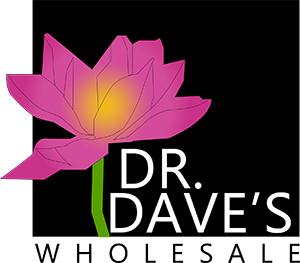



Super Sinus
Relief from sinus conditions complicated by dryness:
- specifically formulated for dry environments
- used for symptoms such as stuffy or runny nose, sinus congestion, sinusitis, pressure or headache
- contains moistening herbs which won’t leave you feeling dried out
Available in 2-ounce and 4-ounce sizes.
Description
Super Sinus is uniquely formulated to moisten the nose and sinuses while addressing symptoms associated with sinus infections and chronic sinusitis.
Most herbal or over the counter remedies treat the sinuses by drying phlegm. This works well if the sinuses are moist to begin with.
However, for people who live or work in a dry environment, this serves only to dry what little phlegm exists in already dry nasal passageways. This dried phlegm is often the cause of sinus pressure, headache and congestion. Proper treatment is to moisten dryness, increase circulation in the sinus cavities and gently transform phlegm.
The difference between transforming phlegm and drying phlegm is subtle but important. Herbs which transform phlegm are gentler on the body. They are often seeds which are generally oily and moistening (and thus life-giving). Once moist, the dried phlegm loosens and thereby has an avenue through which to leave the body.
Ingredients
-
Phragmites (Lu Gen)
Phragmites is the name given to species of aquatic grasses. The grasses can reach a height of 5 and 15 feet, with feather-like flowers and thin, stiff, hollow stems. The rhizomes are used in herbal preparations, which are dug up at the end of spring or in the fall and removed of fibrous material. It clears heat from the lungs.
-
Benincasa Seed (Gua Ren)
Also known as winter melon or Chinese wax gourd, benincasa is a type of herb native to China. The benincasa is similar in appearance to a small watermelon, with bright, green skin. The fruit usually ripens in the late summer or early autumn and the seeds are removed from the plant and dried in the sun before being used in herbal remedies. It Clears heat, expels phlegm and moistens the lungs.
-
Peach Seed (Tao Ren)
Peach seeds are enclosed within the stone of the Peach. Peach seeds are harvested after a peach ripens by cracking open the stone, harvesting the seeds and drying them in the sun. After being dried, the seeds' skins are peeled off. Peach seed is affiliated with the Heart, Large Intestine, Liver and Lung channels and invigorates blood circulation, removes stasis, and moistens the intestines. Peach seeds are also sometimes used to help relieve coughs.
-
Coix Seed (Yi Yi Ren)
Coix seeds come from the coix plant. The seeds have a milky white outer surface and a slightly sweet taste. Coix seeds are harvested in the fall when the coix plant ripens and are dried in the sun. They clear heat by stimulating the spleen and lung.
-
Xanthium (Cang Er Zi)
The pods, or fruit, are used in medicine, and are referred to as cang er zi based on their color and appearance. It unblocks nasal obstruction.
-
Magnolia Flower (Xin Yi Hua)
Magnolia flowers come from the magnolia tree. The flowers are cuplike and fragrant, with between six and 12 petals apiece, and range in color from white to pink to purple. The flower buds and petals are collected in early spring when the bud is not in blossom, then dried in the sun and cleared of debris for use in herbal preparations.It unblocks nasal obstruction and sinus headache.
-
Angelica Root (Bai Zhi)
A graceful flowering plant related to carrots, dill, and fennel. The plant has an intense yet sweet aroma more like carrots than like dill or fennel. it expels wind, eliminates dampness, unblocks nasal passages.
-
Scutellaria (Huang Qin)
Scutellaria is one of the oldest herbs in traditional Chinese medicine. Scutellaria is a conical, twisting type of herb that can reach up to a foot in length, with long brown roots. The roots are harvested in autumn or spring, after a plant reaches between three and four years of age, and are used in herbal preparations. Its main functions are to remove heat and invigorate the blood and dries dampness.
-
Forsythia (Lian Qiao)
Forsythia is a hardy tree and the fruit of the forsythia is used medicinally. The fruit is steamed, dried in the sun, and the seeds removed from the fruit before used in herbal remedies. It clears heat.
-
Ophiopogon (Mai Men Dong)
Ophiopogon is a small herb grown in small parts of China. The plant has long, thin green leaves and tuberous whitish roots, which are used in a variety of herbal remedies. It is typically harvested in the summer and allowed to dry out before use. It clears heat and moistens the body.
-
Liquidambar (Lu Lu Tong)
The sweetgum tree produces hard, dry, fruit. When the fruit opens the seeds are released and used in herbal preparations. It invigorates blood and promotes movement of Qi.
-
Wild Asparagus (Tian Men Dong)
It grows in the mountainous regions of China and the root is used medicinally. Wild asparagus root is harvested in the autumn, the roots are cleaned and dried before use. It is one of the most valued shen tonics in all of herbal medicine. It opens the heart (increasing well-being and peace of mind); moistens and purifies the lungs (which removes toxins and phlegm from the respiratory tract and aids in breathing); and promotes the production of kidney yin (which may improve sexual potency).
-
Vitex (Man Jing Zi)
Vitex is a type of tree that grows throughout the Mediterranean and central Asia. It is also known by agnus castus, chaste tree and Monk’s pepper. The tree grows to a height of approximately 15 feet, with small flowers that are renowned for their ability to attract butterflies and hummingbirds. Chaste tree berries have a pepper-like flavor and aroma; they are typically dried and harvested for their medicinal properties. Vitex works by stimulating the pituitary gland, expelling wind and clearing heat.







